Sinowilsonia属はユキノシタ目マンサク科マンサク亜科Eustigmateae節。中国に固有。
The genus Sinowilsonia belongs to Eustigmateae, Hamamelidoideae, Hamamelidaceae, Saxifragales and is distributed in China.
雄、雌、両性の花序を形成する。
Male, female, and hermaphrodite inflorescences are formed in a tree.
両性花序の基部10個ほどは両性花でそれ以外の花は雄花。雄花序の全ての花は雄花。雄花は扁平化して花被と雄蕊が癒合した雄蕊花被複合体を形成する奇妙な形態。クルミ科でも雄花序が扁平化し花も扁平化している。陸上植物の形態進化仮説であるテローム説 (Zimmermann 1953, 1965) では立体的な分岐した茎が扁平化して葉になったという仮定をおくが、Sinowilsoniaでおきた扁平化の仕組みを知ることが出来れば、テローム説についてさらに踏み込んだ検討ができるかもしれない。
Basal 10 flowers are hermaphrodite in a hermaphrodite inflorescence and other flowers are male. All flowers are male in male inflorescences. Each male flower is flattened and each tepal is fused with each stamen in an opposite position. Male inflorescences and flowers of Juglans are flattened and may use similar mechanisms in Sinowilsonia. The mechanism of the flattening may give insight to the “Planation” of the Telome theory (Zimmermann 1953, 1965).
Zimmermann, W. 1953. Main results of the “telome theory.” The Palaeobotanist 1: 456-470.
Zimmermann, W. 1965. Die Telomtheorie. Gustav Fischer Verlag, Stuttgart.
雄花序先端部のいくつかの扁平化した雄花。
Flattened male flowers in a distal part of a male inflorescence.
両性花序基部に10個ほど両性花を形成する。雄花同様、雄蕊とそれと対生の位置にある花被が癒合し、雄蕊花被複合体を形成している。さらに、5本の雄蕊花被複合体が癒合し筒状になっている。さらに、その外側に白い毛が生えた器官が癒合しているように見える。この器官は何であろうか。花被、小苞、苞の可能性があるがどれかは発生過程、発現する遺伝子を調べればわかると思う。
Approximately 10 flowers are formed at the base of a hermaphrodite inflorescence. Five stamen-tepal complexes are fused to cover gynoecium. Furthermore, a layer of tissue with white hair covers. It is unknown the white tissue is an outer tepal, bracteole, or a bract until we investigate the developmental process and expression patterns of genes involved in these organ development.
雌花序は雌花のみから構成されている。雌花は両性花のように、雌蕊を雄蕊花被複合体が覆い、その外側を白い毛の生えた器官が覆っている。雌花の雄蕊花被複合体は葯が無く、短い葯糸のみがある。さらに、花糸が花被と癒合せず、花被は両性花や雄花の花被に較べて大きく、切れこんでいる。葯と花被の大きさはトレードオフの関係にあるのだろうか。
A female inflorescence is composed of female flowers. In a female flower, a gynoecium is covered with a fused stamen-tepal complexes and a fused organ covered with white hair as in a hermaphrodite flower. However, anthers are rudimental and shorter filaments than those in hermaphrodite flowers are not fused with tepals. Tepals are bigger and more lobed than those in hermaphrodite flowers.

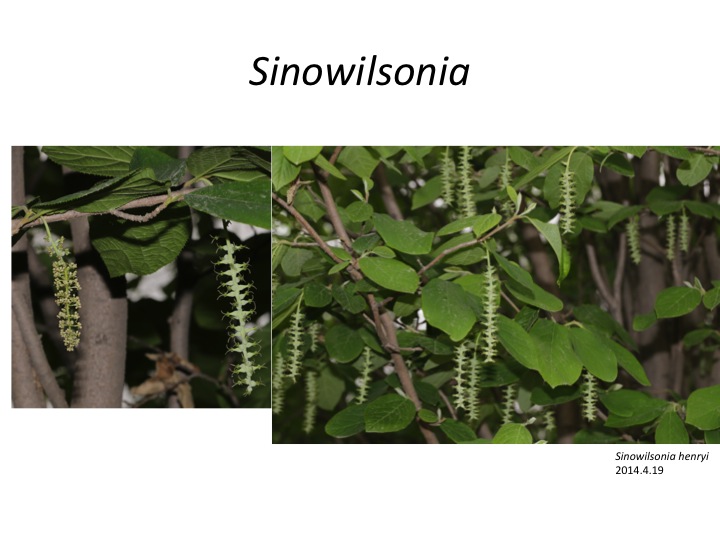
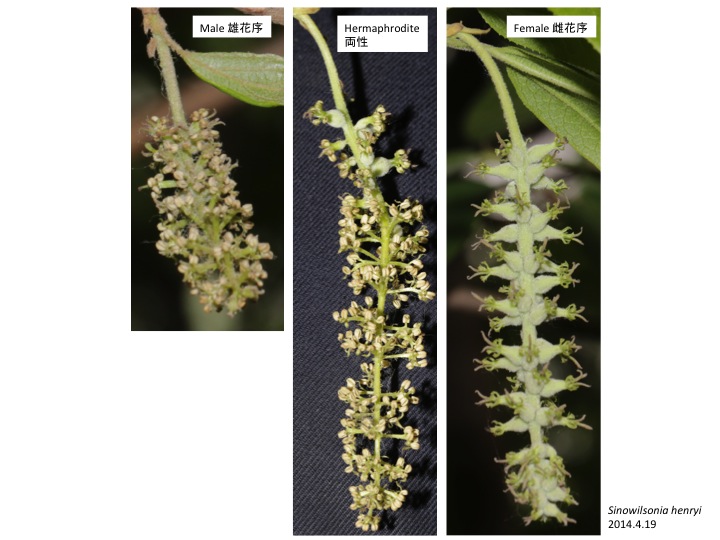
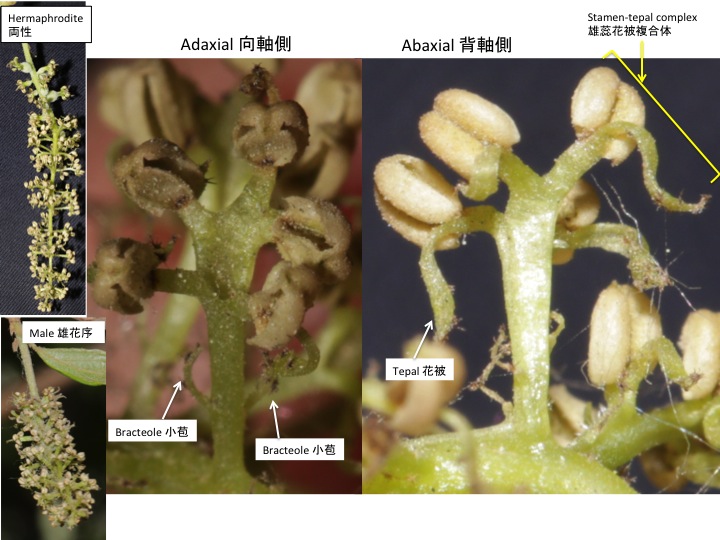
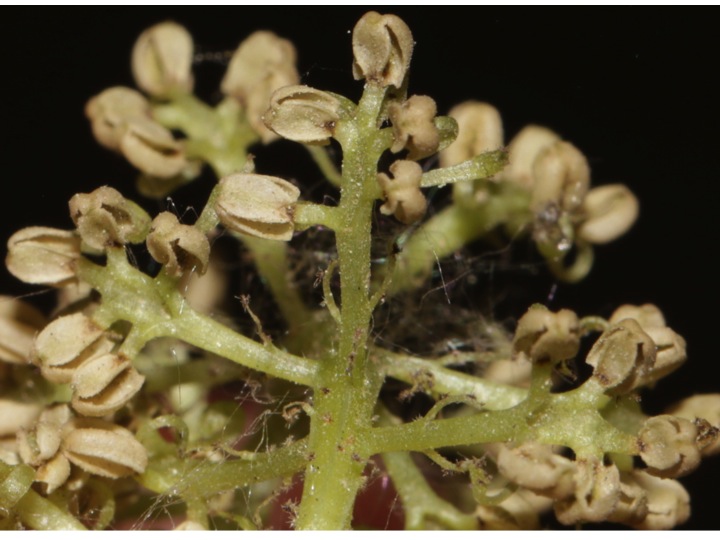
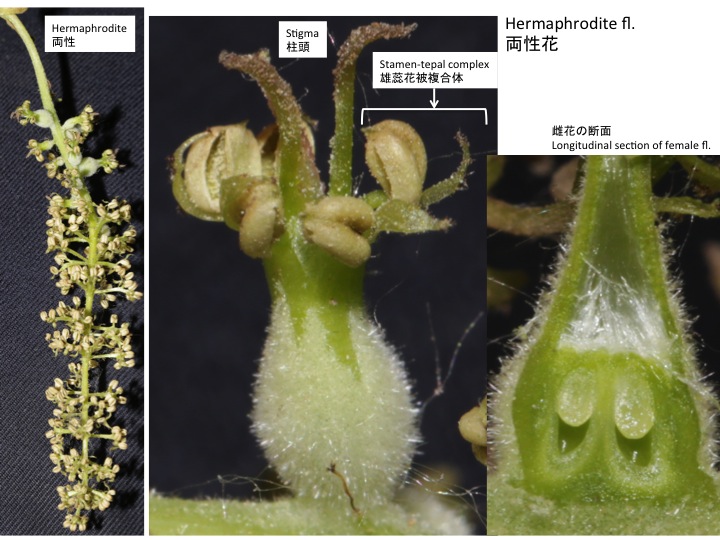
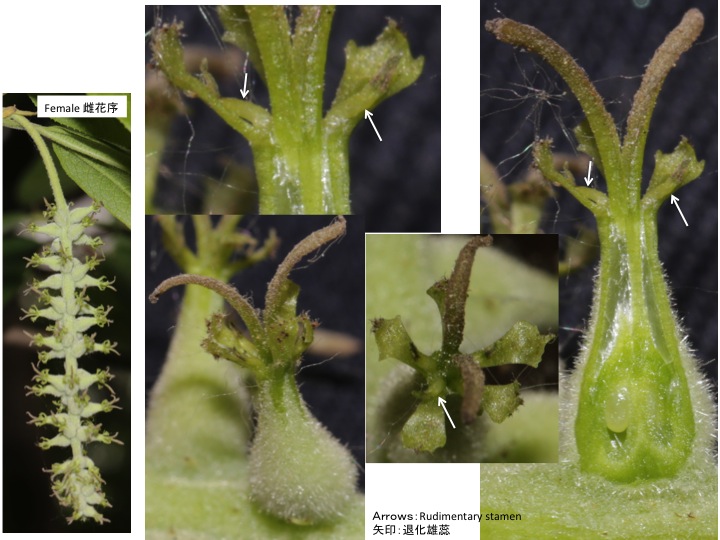
In my opinion, the tissue with white hairs is a bract or a bracteole. There are two reasons: the first one is that there is an inferior ovary; and the second one is that the outside part of the receptacle and the part or side below of the receptacle are as a whole, which shows this layer of tissue is not a part of the flower.
Is a small bract called a bracteole or bractlet? If yes, I would like to call it a bracteole.
By the way, how can I insert a picture in this comment?
Dear Chunli,
Thank you very much for your comment. I think it is hard to identify homology of organs based on their relative positions, because relative positions are changeable in some mutants, such as floral homeotic mutants in which carpels are formed outside of petals. Although there may be constraint in development, it is hard to know at this stage. So I prefer to keep the homology of the white-hair tissue as an open question at this stage. Anyway, think you very much and very nice to hear from you.
Best wishes,
Mitsuyasu